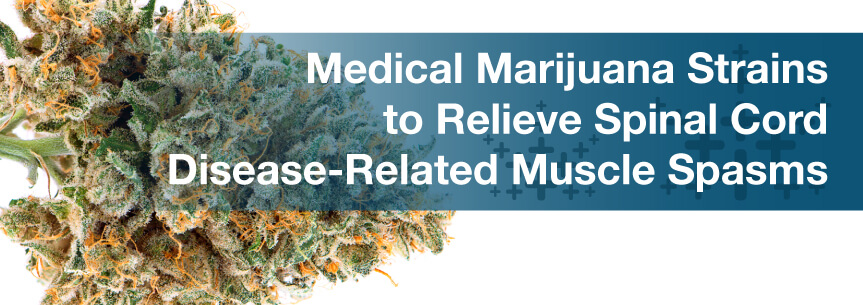
Spinal cord diseases are any disorders affecting your spinal cord not caused by injury. No matter what the main cause of the issue is, this condition can cause painful and debilitating symptoms, one of which is muscle spasms. Although some spasms may go unnoticed, many are so painful and sudden that they create a crisis. Severe muscle spasms can even send patients to the emergency room for medical assistance with the pain.
Medical marijuana can be used to relieve the muscle spasms caused by spinal cord disease. However, it’s important to find the best strain option. Each strain has its own individual effects, and patients should be aware of the types of strains out there and how it will treat their condition.
Spinal cord disease develops because of an underlying condition. This could be an autoimmune disorder, inflammation, infection, cancer, tumors or a degenerative disease like multiple sclerosis. Because of this underlying condition, damage can occur to the spinal cord.
The spinal cord is an essential part of the nervous system — it transmits messages between your body and your brain. When illness or disease triggers a spinal cord disease, it can cause many problems, including muscle issues such as:
There are a few things patients should be aware of before choosing a marijuana strain to treat their muscle spasms caused by spinal cord disease. The first is the three main kinds of strains available:
You should also know which cannabinoids are present in a particular strain. Cannabinoids are the chemical compounds that give marijuana its medical benefits. Although there are more than 150 cannabinoids, the two that get the most attention are tetrahydrocannabinol (THC) and cannabidiol (CBD).
THC is best known for giving pot its psychoactive effects, but it also has many healthful benefits. CBD is an important component in medical marijuana treatments, but it doesn’t give users the high. Most cannabis professionals believe CBD and THC working in harmony gives patients the most medicinal benefits.
Patients using medical marijuana to treat muscle spasms have many options. In fact, hundreds of strains have been approved for the treatment of this symptom. Some more notable choices include:
When picking out a medical marijuana strain, it’s always best to turn to the experts. Dispensaries in your city are available to help you pick out a strain. If one of our suggestions is not available, they can give you advice and offer recommendations.
Additionally, you should only use medical marijuana under the direct supervision of a healthcare professional. Search our database to find a highly trained doctor who is familiar with your state’s medical marijuana laws and can assess your condition to see if you qualify.